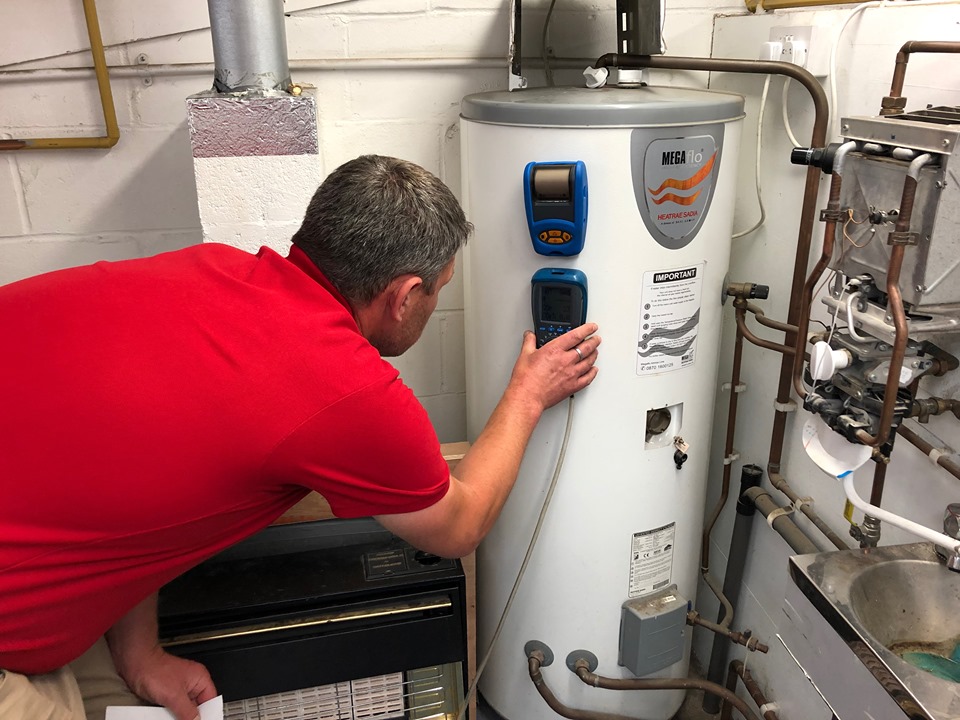
Gas Training Courses at Able Skills
Did you know it's a requirement for Gas Engineers to carry a Flue Gas Analyser when working on site? If you're an existing Gas Engineer then of course you already do, but what about others who are interested in the trade? Rest assured you will be taught everything you need to know from which tools you'll need, to how to use them on our Gas Training Courses and we'll even show you a clip of a student using a Flue Analyser himself.
With it being a major part of the job, we thought it would be a good idea to talk about some of the most commonly used Flue Gas Analysers on the market today. Now everyone has their own personal preference when it comes to tools, so please don't look at this list as the only ones out there!
First Up Is The Kane 458
Now we use this brand ourselves on our very own Gas Training Courses. Being a very reliable brand, the latest Flue Gas Analyser is the Kane 458 and has the capability of measuring a vast range of variables used for commissioning and performing maintenance work on boilers and gas systems. These include various aspects of combustion such as oxygen content, excess air, CO/CO2 ratio and combustion efficiency. All readings are shown clearly on a large digital display giving six all at once.
The Testo 327-1
Here we have a Flue Gas Analyser which measures combustion efficiency, °C, O2, CO2, CO, flue draught and can be used with natural gas, heavy and light oil, kerosene, LPG and wood pellets. The Testo 327-1 comes with a simple to use navigation menu and certainly boasts reliability with Testo's popular reputation. A benefit that may be overlooked by some with this model is the fact that it's designed with a shock-proof elastomeric protection skin and a modular probe connection system which is compatible with the Testo 330 range of probes.

Gas Training Courses at Able Skills
The Anton Sprint Pro2 Multifunction Flue Gas Analyser
Want a Flue Gas Analyser that's capable of performing let by & tightness tests, calculating CO2 content, CO2/CO ratio, and combustion efficiency as well as having the ability to measure parameters such as carbon monoxide, oxygen, temperature, and pressure? Well here it is. Being something that you'll drag with you on site, chances are wear and tare will naturally occur. To overcome this, this analyser comes equipped with a robust build in addition to a trap and double protection for water ingress!
The TPI 709R Flue Gas Analyser
Now this analyser remains a solid option as not only does it measure exactly what you would expect it to, but it boasts a unique safety function too.. The TPI 709R Flue Gas Analyser doesn't switch off when carbon monoxide is detected! It's key features include:
- Max CO: 10000ppm
- Max O2: 25%
- Max CO2: 25%
- CO/CO2 ratio calculation
- Efficiency, tightness and excess air calculation
- Flue temperature range: -40˚C to 800˚C
- Pressure range: -150mBar to +150mBar
Now as we mentioned earlier, these are not the only ones out there and we're certainly not saying you should only stick to these brands! Everyone will always have their own preference and may be recommended a Flue Gas Analyser by someone they work with or even when undergoing Gas Training Courses.

Able Skills Gas Training Courses are Bpec Accredited
Now we have a clip of one of our students on the 7 week Gas Training Course who took a combustion performance reading using a Flue Gas Analyser himself! It was taken from one of our Bpec Approved Gas Centres and would love for you to check it out!
We hope this blog has helped those who are perhaps looking for a new Flue Gas Analyser or are looking to buy their first one. We would always advise you guys to look around and if you're on one of our Gas Training Courses, feel free to ask one of our industry expert instructors!
If you're reading this and maybe want to become a Gas Safe Registered Engineer, please click here for all our Gas Training Courses.